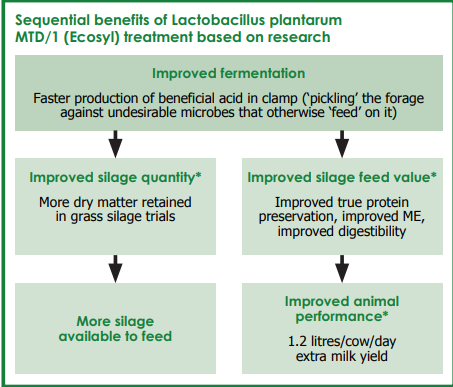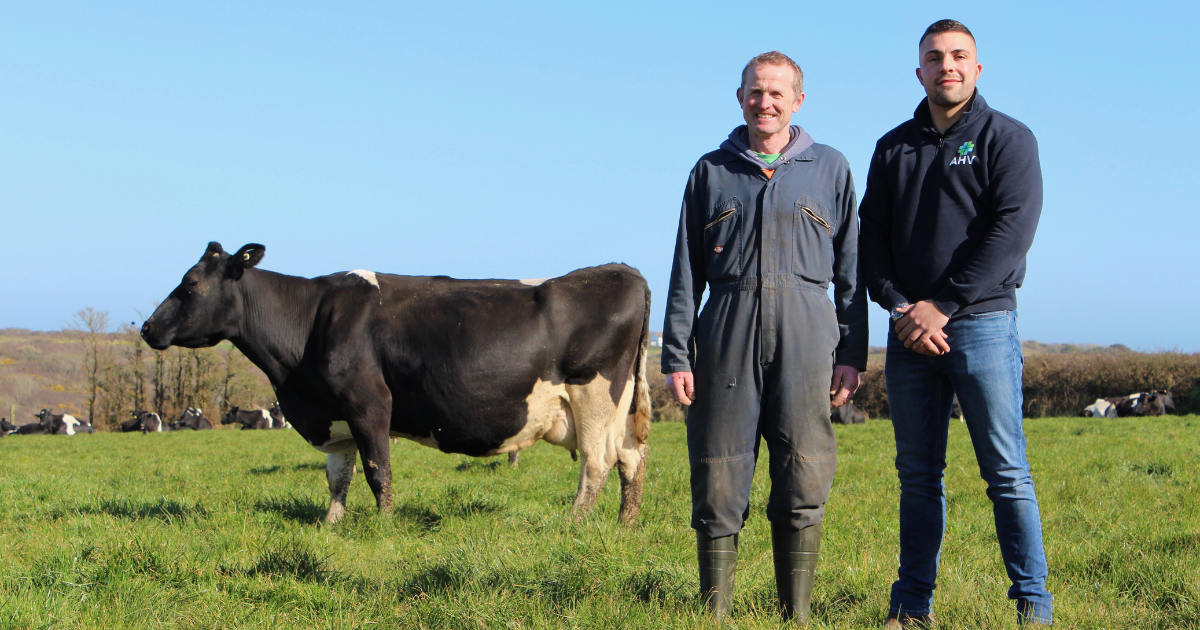
Minimising silage losses makes increasing sense
High fertiliser and feed costs mean producing the best possible silage makes even more sense this season – especially with strong milk prices. So how could a silage additive give a return?
Aside from grazed grass, home-produced silage is one of the most cost-effective ways of feeding a dairy cow, as well as being highly sustainable, said Forage Product Manager Jackie Bradley of Volac. But you have to make it well.
“Assuming that you’ve grown good grass in the first place, the next step is to minimise any losses in its dry matter (DM) and nutrient content that occur in the clamp,” said Ms Bradley. “This is important not only so you have enough silage to last the winter, but also so that more of the cow’s nutritional requirements can come from the silage.
“Clearly, cows still need concentrates. But having good silage safely ‘banked’ puts you in a stronger position. It sets you up to produce more milk from what you have grown on the farm.”
As well as adopting best silage-making practices to maximise silage quantity and quality – such as cutting grass at its nutritional peak and before it goes to head when it becomes less digestible; wilting rapidly to minimise in-field losses; and consolidating and sealing clamps thoroughly to keep out air - Ms Bradley said hand-in-hand with these goes protecting your silage investment with a proven additive.
“There are multiple additives out there, but we always say to farmers use one that is backed-up by strong scientific results.
“Fundamentally, by using an additive containing beneficial bacteria, you are aiming to produce the most efficient fermentation – which is the ‘pickling’ process that preserves silage against the growth of undesirable microbes that would otherwise feed on it, such as enterobacteria and clostridia.
“If you look at the proven additive Ecosyl, for example, when applied, it provides one million specially-selected, beneficial Lactobacillus plantarum MTD/1 bacteria per gram of forage treated. Lactobacillus plantarum MTD/1 – or MTD/1 for short – is a highly-researched strain of bacteria, which is extremely efficient at fermentation. So it puts you in better control of the preservation process. Without this, you’re leaving fermentation at the mercy of whatever bacteria happen to be present on the grass – both good and bad bacteria. Which, in the current financial climate, is a big risk.”
Crucially, once applied, Ms Bradley says Ecosyl had been shown to produce a much faster production of beneficial acidic conditions in the first 24 hours after ensiling compared with untreated forage. “This is a vital period for preventing undesirable microbes gaining a foothold,” she said.
“Following on from this, while DM losses even in a well-managed clamp can typically be 10% of the original DM ensiled, using Ecosyl has been shown to cut DM loss by half.
“If you have 1,000 tonnes of fresh grass ensiled at 30% DM - i.e. 300 tonnes of DM ensiled - this halving effect would equate to having 15 more tonnes of silage DM available to feed. This alone covers the cost of the additive. But Ecosyl has also been shown to retain more of the nutrients - producing silage with a higher metabolisable energy content and preserving more true protein.
“Feeding silage preserved with Ecosyl has also been shown to lead to improved animal performance. Across a range of forages in 15 independent trials, Ecosyl treatment boosted average milk yield by an extra 1.2 litres of milk per cow per day.”

Call the Grassland and Forage Team on 01769 576405 or email [email protected]









